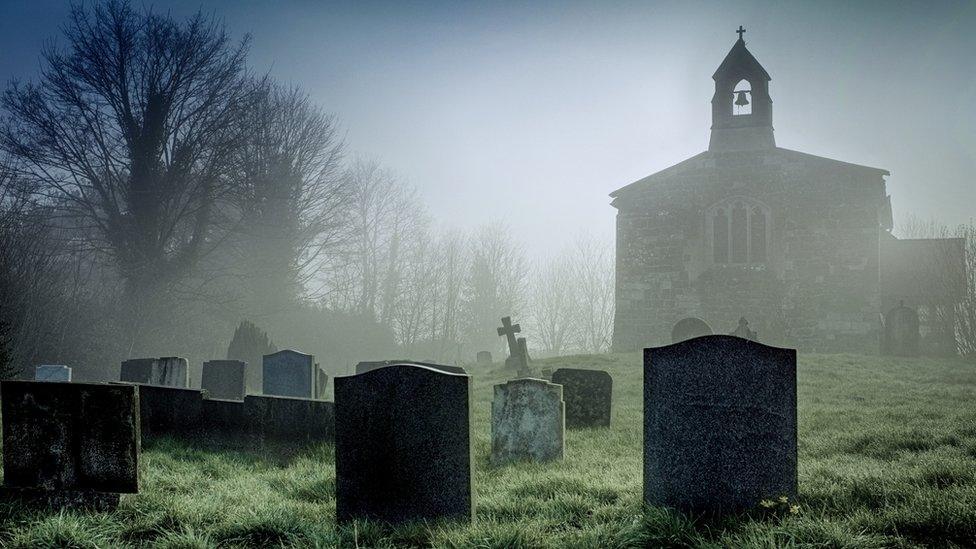Finding the plot: England's tombstone tourists
- Published

Visiting a graveyard for enjoyment is not everyone's cup of tea. But tombstone tourists - or "taphophiles" - are increasingly to be found wandering through cemeteries, examining headstones, and generally enjoying the sombre atmosphere. What is the appeal?
Historians, genealogists, grave-rubbers , externaland fans of the macabre all have their reasons for sloping round burial grounds - but there is also a tourist market for those wanting more than a traditional sightseeing trip.
Sheldon Goodman, grave enthusiast and co-founder of the Cemetery Club, takes groups of interested people through various burial grounds in London, including Tower Hamlets Cemetery Park, Brompton Cemetery, and Highgate.
He says one of the reasons the pastime is increasing in popularity is the number of celebrity deaths over the past few years:
"Highgate, the best-known London cemetery, is due to be receiving the remains of George Michael," he says.
"Events like that really increase awareness and the value of what I like to call 'libraries of the dead'."

All those people, all those lives - where are they now?
Although Michael's plot is in a private area of Highgate closed off to tourists, the cemetery contains many famous graves which can be visited - ranging from those of political philosopher Karl Marx to television prankster Jeremy Beadle.
It also contains some of the finest funerary architecture in the country, says the Friends of Highgate Cemetery Trust, which has looked after and maintained the site since 1975.
The Egyptian Avenue, Circle of Lebanon and the Terrace Catacomb, along with more than 70 other monuments, have been listed by English Heritage, while the cemetery itself is categorised as a Grade I-listed park, complete with landscaping and exotic formal planting.
But it's not just the famous cemeteries that capture the imagination of taphophiles.
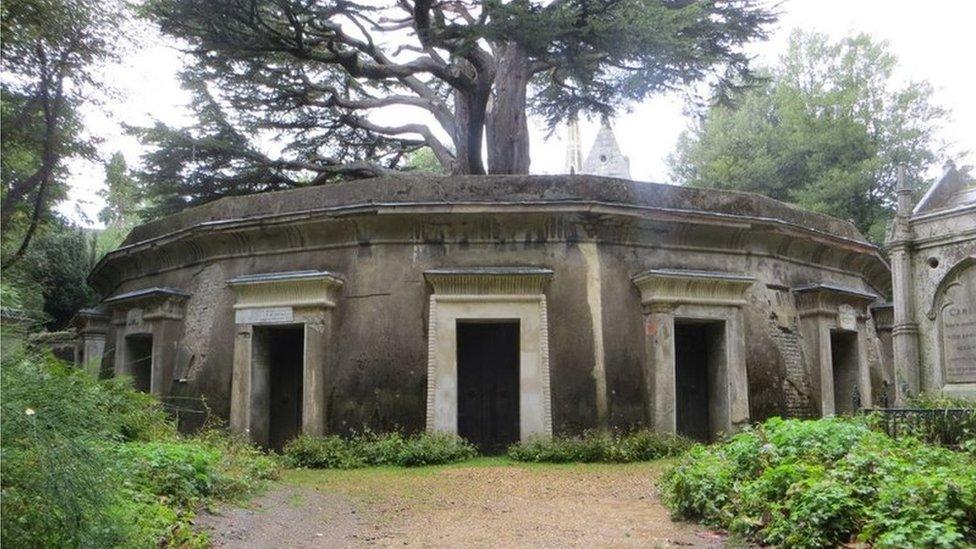
The Circle of Lebanon at Highgate Cemetery takes its name from the tree which the vaults have been built around
Nicola Carpenter from Maidenhead has been fascinated by graveyards since she was aged about eight, when she and other local children would play in the village cemetery. She continues to visit cemeteries a couple of times a month and writes a blog called Beneath Thy Feet, external.
"I can remember back then reading the names on the headstones and wondering who these people were and what sort of lives they had lived," she says.
"I visit graveyards to satisfy my curiosity as to who these people were that came before me and how they lived in and shaped the town I live in now. My local Victorian cemetery is one I visit often and is where I have found some of the most interesting life stories, and some influential and famous people are buried there.
Ms Carpenter says through her wanderings she has "discovered many fascinating stories - of love and friendship, of betrayal and revenge, murder and suicide.
"Some gravestones have telling inscriptions and epitaphs. For example, a gravestone in Bisham, Berkshire reads, 'In Loving Memory of Vivian Charlotte, wife of David Lewis. Born 22 April 1923 and died in her racing car at Brighton Speed Trials 14 September 1963'.
"A gravestone in Bray bears the words:
'Weep not my husband dear I pray,
It was Jesus called us both away.
With my sweet babe upon my breast
I now enjoy perpetual rest.'"

The Circle in Victorian times
According to the Design Council, burial grounds in the 19th Century were originally built as public open spaces designed to be attractive places to visit in their own right. It is in these burial grounds we're more likely to see spectacular headstones and memorials.
Before then, especially in big cities, burial sites were crammed in between shops, houses and taverns - wherever there was space. Bodies were tossed amongst other human remains in graves just a few feet deep. They were overcrowded, neglected and smelled awful.

World-famous cemeteries
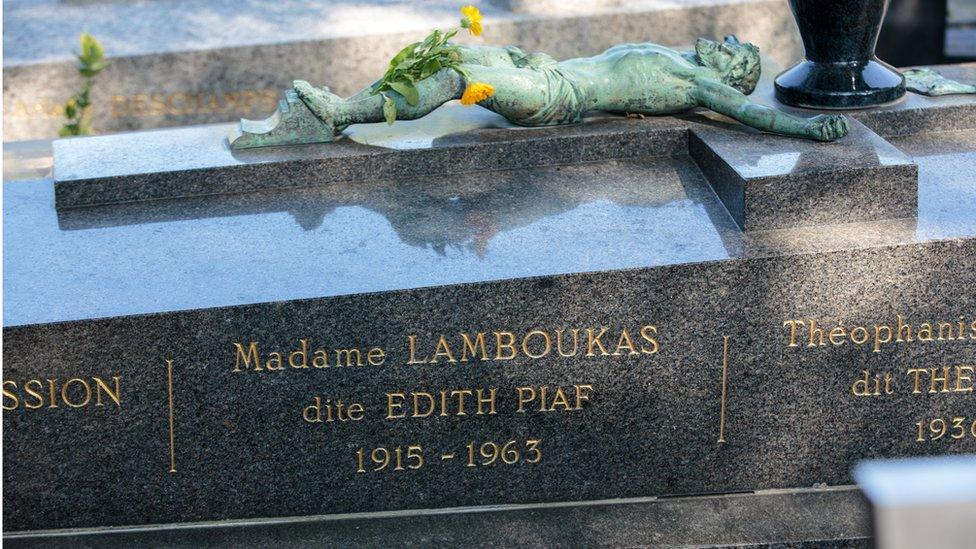
Père Lachaise in Paris, external opened on 21 May 1804 and initially was not popular - until the people running the cemetery embarked on a publicity campaign and organised the transfer of the remains of poet and fabulist Jean de La Fontaine and playwright Molière. The fashionable French began to request burial plots and there are now more than a million bodies buried there, and many more in the columbarium which holds the remains of those who have been cremated. Edith Piaf, Jim Morrison and Oscar Wilde are buried there.
Cemitério de São João Batista, external in Rio de Janeiro is the resting place of many famous Brazilians, including the composer Antônio Carlos Jobim and singer Carmen Miranda. There is also a field of small crosses that makes up the "little angels" graveyard. These are of children aged under seven whose parents had no means of paying for an official burial.
Cementerio de la Recoleta, external in Buenos Aires contains more than 6,400 statues, sarcophagi, coffins and crypts to commemorate some of Argentina's most celebrated sons and daughters. The tomb of Eva Peron is there, and so is the mausoleum of Liliana Crociati, who died on her honeymoon in Austria in the 1970s. Her parents reconstructed her bedroom within her tomb, and at the entrance placed a bronze statue of Liliana in her wedding dress, with her beloved pet dog at her side.
The Zentralfriedhof, external in Vienna has a dead population almost twice the number of present living residents of the city. To make the cemetery more attractive, famous citizens such as Ludwig van Beethoven and Franz Schubert were exhumed and transferred there. Funerary monuments were built for others, such as Wolfgang Amadeus Mozart.

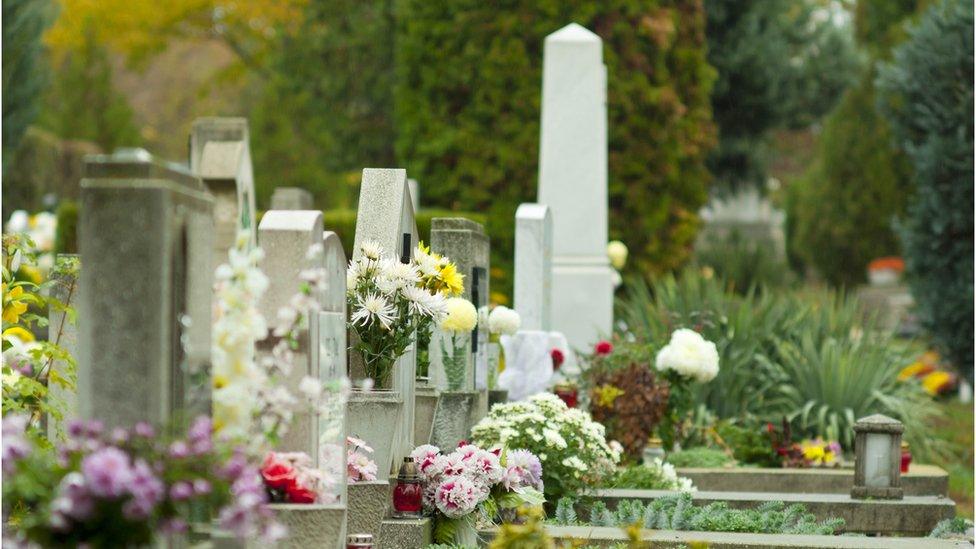
Eventually Victorian concerns about hygiene led to many town and city churchyards being closed and replaced by larger cemeteries - often on urban fringes.
"As well as functioning as burial sites, they were also regarded as places for visiting and promenading of a more dignified and morally uplifting kind. The legislation that provided for new burial grounds seemed to have envisaged that they would in due course become public open spaces," the Design Council says.
Mr Goodman believes society's relationship with cemeteries has "ebbed and flowed".
"To the Victorians they were places where you could see rare and beautiful plants, take a stroll in a quiet space and obviously pay your respects to the departed.
"Then the First World War came, and as a nation we experienced loss to an unprecedented level, and the affection for cemeteries suffered as a result."
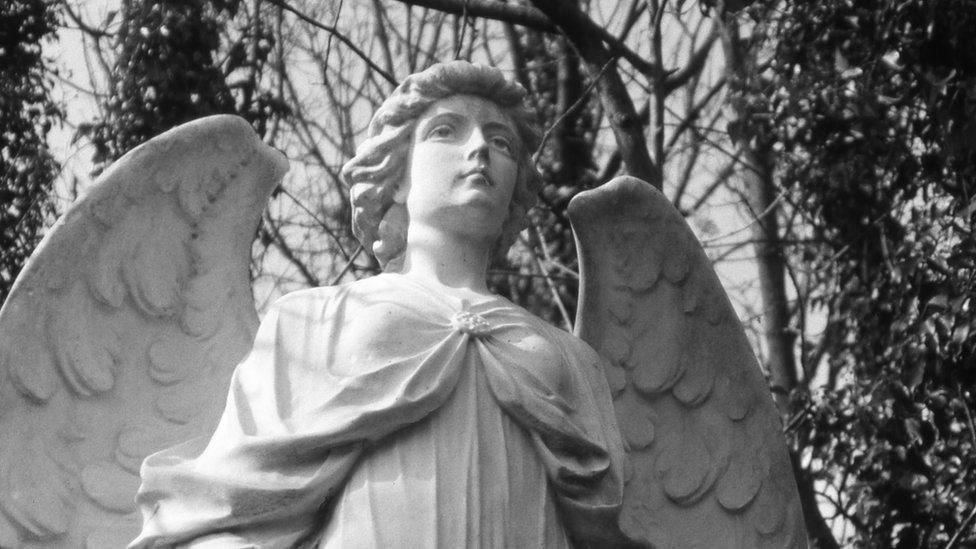
In the post-Victorian age, flamboyant funerals fell out of favour and with them, ornate tombs.
Conservation charity Caring for God's Acre says many cemeteries are overgrown and neglected - but because of that, have also become a haven for wildlife.
"Many older churchyards have remained virtually untouched and unchanged for generations, allowing plants to thrive and wildlife to flourish alongside historic monuments and memorials," says the organisation, which is non-religious.
It has set up a project asking volunteers to log the heritage and wildlife of burial grounds across the country.
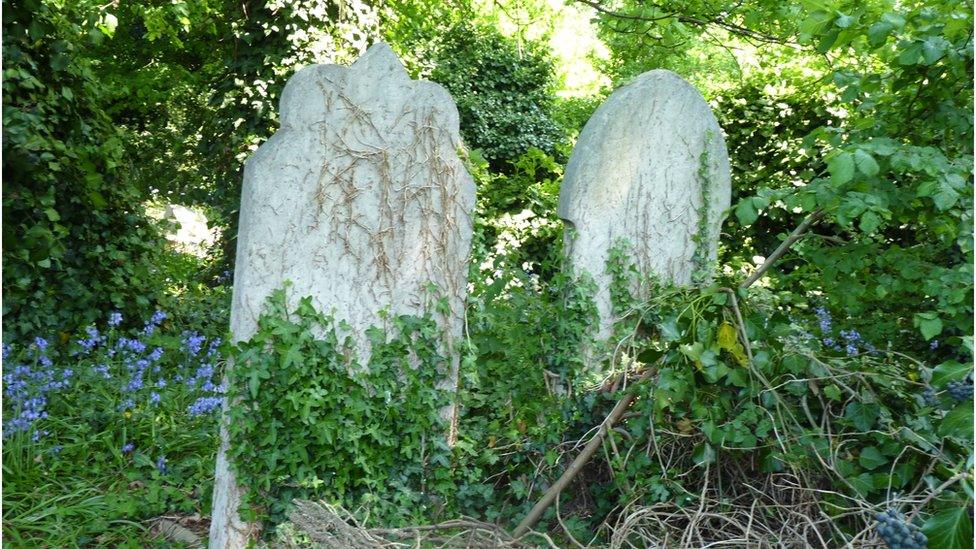

Some cemeteries with tours
Many cemeteries run guided tours, usually by volunteers, including Brookwood near Woking, external in Surrey. It was originally accessible by rail from a special station - the London Necropolis railway station - next to Waterloo station in central London. Trains had both passenger carriages reserved for different classes and others for coffins (also for different classes).
The Key Hill and Warstone Lane, external cemeteries in Birmingham are included in a guided walk around the city's Jewellery Quarter. Key Hill holds the remains of Joseph Chamberlain (father of Neville), while Warstone Lane cemetery has a stone erected to a modern-day druid who died in 1935.
Arnos Vale in Bristol, external is a 45-acre Victorian garden cemetery inspired by the Père-Lachaise cemetery in Paris. Arnos Vale runs daytime and "after hours" tours.

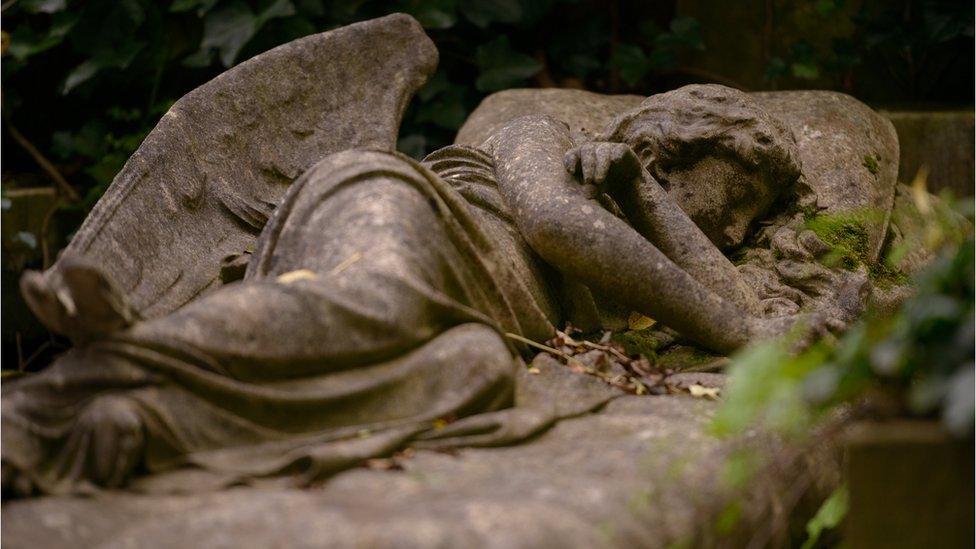
But for the true taphophile, pleasant though the site might be, it is the tombstones that are the main draw.
Mr Goodman's interest also stemmed from childhood, when he would visit his grandfather's grave.
"I used to get confused as to why we'd only ever go to one grave when it was surrounded by hundreds of what were once other people.
"Who were they? What were their stories? Headstones don't really give a clear indication what that person was like. In most cases, they've never even seen their own headstone for obvious reasons, so I make it my personal mission to bring them back to life for a little bit and uncover their lives."
The Find a Grave website, external - think Facebook for dead people - has records of 159 million graves, with more being added frequently. It estimates there are about 50,000 searches of its database every day.
Website creator Jim Tipton - who lists his favourite graves as those of Al Capone, Karl Marx, Richard Feynman, Al Jolson and Lucille Ball - set it up because he "could not find an existing site that catered to my hobby of visiting the graves of famous people. Much to my surprise, I found that there were many thousands of folks from around the world that shared my interests."
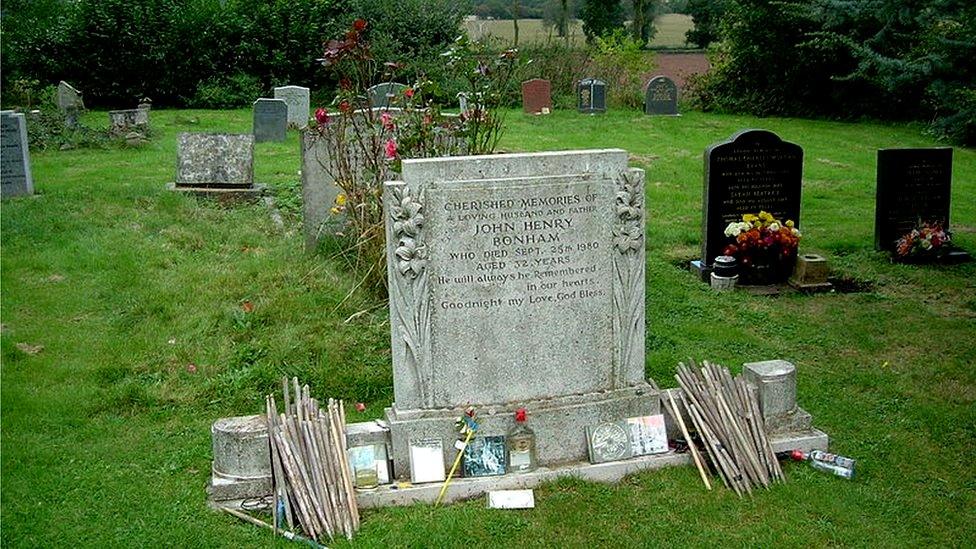
John Bonham's grave in Rushock, Worcestershire
It's not just famous graves which are on Find a Grave, and seemingly run-of-the-mill graveyards can house interesting stones.
"Some people want to make their own mark - in Richmond Cemetery a former cabbie gives his entire life story on a headstone. East Finchley has a bronze figure reclining on a tomb. Highgate has Patrick Caulfield's 'dead' headstone. They stand out and give you a sense of what that person was actually like," says Mr Goodman.
Sometimes the opposite is true, and humdrum graves are the sites of unlikely pilgrimages.
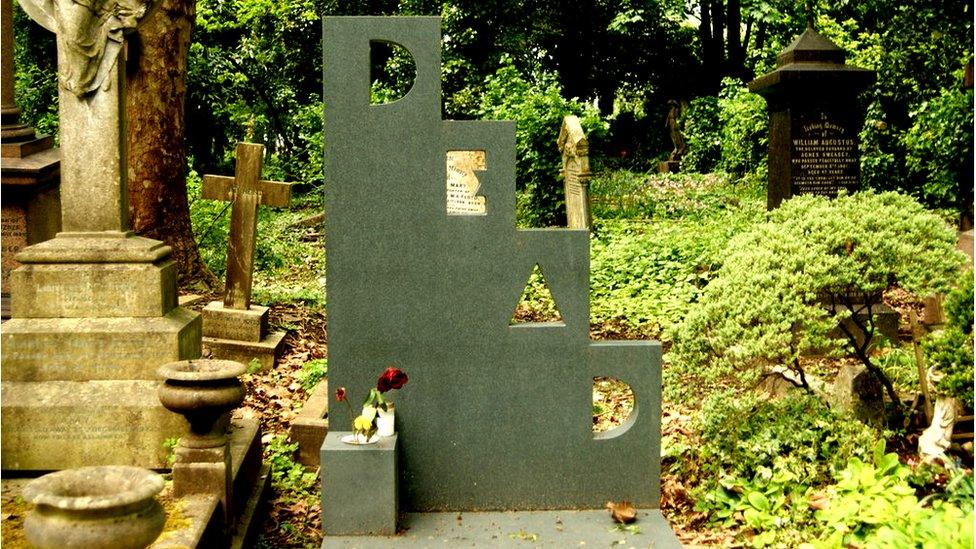
Artist Patrick Caulfield's "dead" headstone
Led Zeppelin drummer John Bonham is buried in the small village of Rushock in Worcestershire. Drumsticks, cigarette lighters, dice and bottles of spirits have been left on the rock star's otherwise traditional grave.
An 18th Century grave on a crossroads on Dartmoor, Devon, is covered by flowers, small toys and coins. It's believed to be the final resting place of a woman who hanged herself. Because she took her own life she was not allowed to be buried with religious rites.
In the grounds of Malmesbury Abbey in Wiltshire lies the grave of a certain Hannah Twynnoy who in 1703 became the first person in England to be killed by a tiger. She was a 33-year-old barmaid at a local pub, which was playing host to a menagerie. The story goes that Hannah, for some reason, enjoyed taunting the tiger which eventually lost patience and attacked her. Her epitaph reads:
In bloom of Life she's snatchd from hence,
She had not room to make defence;
For Tyger fierce took Life away.
And here she lies in a bed of Clay,
Until the Resurrection Day.
In a way, it doesn't really matter about who's buried beneath the stone. Everyone has a story.
Mr Goodman says he approaches all cemeteries "with a genuine curiosity as to what's gone before.
"Songs that were once sung, relationships which once were - from a cultural standpoint, cemeteries are great indexes to lives long gone."
